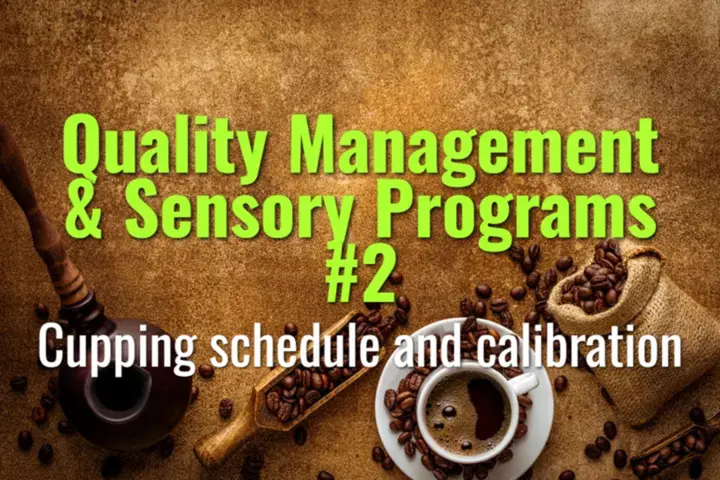Cupping schedule and calibration
How to design a cupping schedule for ongoing quality checks and how to run calibration sessions to align tasters’ sensory evaluations.
- Coffee Basics Nerds
- 2 min read
Article 2 of 12 in Quality Management & Sensory Programs/

Why It Matters
- Coffee quality is dynamic—beans age, roast profiles drift, and brewing variables shift.
- Regular cuppings ensure early detection of defects and maintain flavor consistency.
- Calibration aligns team members so scores and descriptors are comparable.
Cupping Schedule
- Green Coffee Intake:
- Cup new lots immediately after arrival.
- Compare to pre-ship or offer samples.
- Roast QC:
- Cup every new roast profile.
- Spot check at least one batch per production day.
- Production Monitoring:
- Weekly cuppings of production roasts.
- Maintain a rolling archive of roasted samples for retrospective checks.
- Brew QC:
- Daily espresso or brew tasting on bar before service.
- Ensure alignment with house standards.
- Customer Feedback Integration:
- Periodic cuppings of returned/flagged coffees to trace issues.
Calibration Sessions
- Purpose: Ensure tasters describe and score coffees consistently.
- Frequency: Monthly or quarterly depending on team size.
- Methods:
- Blind cupping of reference coffees.
- Compare notes, discuss differences in perception.
- Align on SCA scoring framework (aroma, flavor, acidity, body, balance, aftertaste, uniformity, overall).
- Build a shared lexicon (e.g., using the SCA Flavor Wheel).
Practical Tips
- Rotate panel members to avoid bias.
- Use control coffees with known profiles for benchmarking.
- Document calibration outcomes and adjust training where gaps appear.
Summary
A structured cupping schedule keeps tabs on green, roasted, and brewed coffee quality, while calibration sessions align tasters’ perceptions. Together, they create a feedback loop ensuring consistent quality and a unified sensory language across the team.